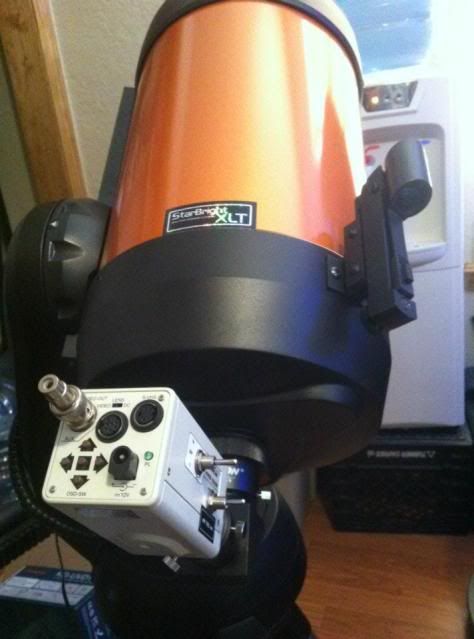As mentioned in an earlier post, my primary area of imaging interest was originally in lunar and planetary imaging, since I accepted the fact that with an altaz mount that deeps sky targets would not be an option. Not that there is anything at all wrong with lunar/planetary imaging, as my friend Richard said once "Deep sky objects looked the same yesterday and will look the same tomorrow". Very true and there is not any target that features so dynamically changing details as the planet Jupiter. I experimented with the webcam that came bundled with the Meade refractor, pushed it to it's limit, and decided it was not cut out for even planetary imaging. I started doing my research on imaging systems, and it became apparent that you basically had to choose between deep sky imaging and lunar/planetary imaging. There really were not many options that were suited for both. In the meantime I still had a desire to try to image at least the brighter deep sky objects despite the limitations of my scope mount.
After some research, I found that generally people were not getting very good results with deep sky imaging and my model telescope. I then stumbled across an imaging system known as the Mallincam camera. These cameras are hand built by Canadian astronomer Rock Mallin. They rely on frame integration (long exposures via video) to build an image, and as a result you end up with long exposure-like images in near "real time". These systems are custom designed for astronomical use, with extended exposure and built-in peltier cooling systems to cool the CCD chip and reduce noise in the output. I purchased a Mallincam Hyper Color camera at an amazing bargain from a fellow astronomer (Thanks Richard!) and I was in business. What makes the Mallincam so amazing is that it uses a modified 1/2" CCD with larger, more light sensitive pixels that is capable of .0000006 lux performance. It has amazing light sensitivity but as is often said, there is no free lunch in astronomy. The price to pay for this performance is lower resolution and system noise. Not a bad tradeoff, and with some luck and processing you can do some amazing shots.
Here is the Mallincam Color Hyper imager:
So with this system I will be able to push the little 8" SCT as much as it can go. It is often said that the introduction of the Mallincam imaging system will make your scope perform as if it had 4 more inches of aperture, and I can certainly see why people say that. My particular Mallincam has a max exposure time of 14 seconds, so it is kindof limiting, but honestly it is perfect for my scope as any longer and the faults of my altaz mount become apparent (field rotation, star trailing, irregular shaped stars). I will post up some of my best images obtained so far in the next post.


No comments:
Post a Comment